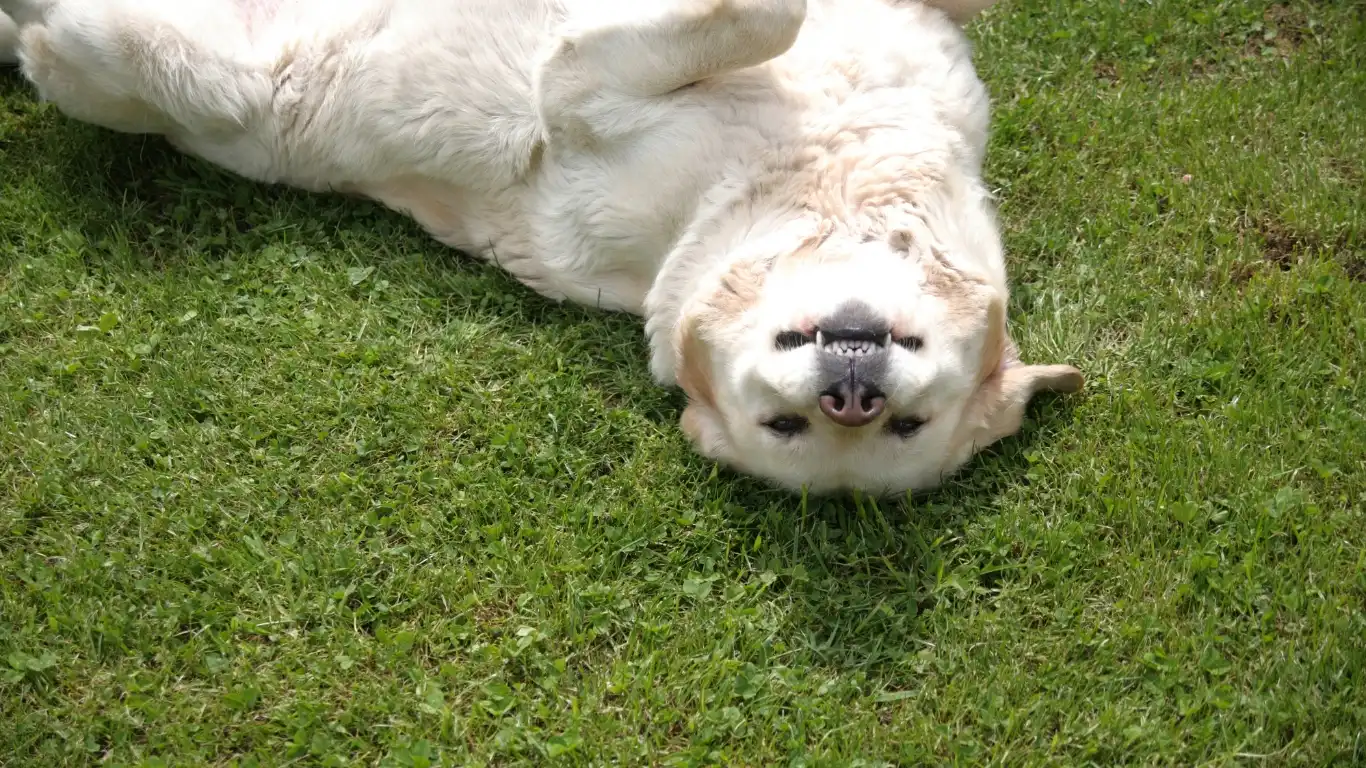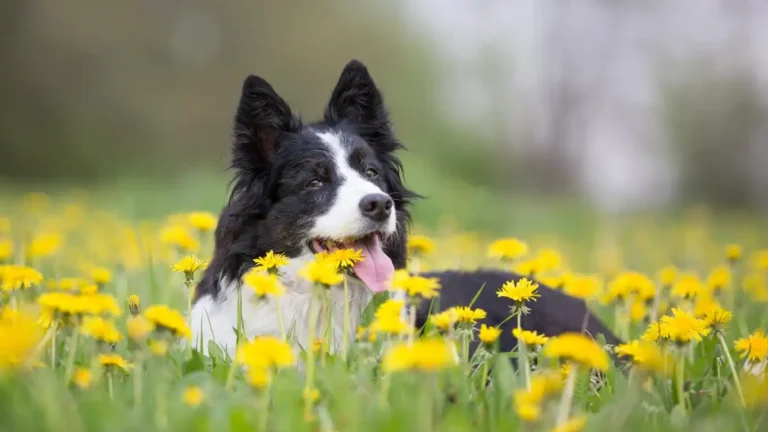Powerful Homemade Flea Repellent for Dogs That Really Works
As a seasoned Veterinary Technician and Nutrition Specialist, I’ve worked with countless dog owners over the years who were desperate to find safer, more natural ways to keep their furry companions flea-free. One question I get asked more than you’d think? How to make a homemade flea repellent for dogs. And honestly, I love this topic—because not only can you ditch the harsh chemicals, but you can also whip up something effective right in your kitchen using simple ingredients. I’ve seen firsthand how well some of these homemade remedies work, especially for dogs with sensitive skin or allergies to commercial treatments. Let’s dive in!
Why Homemade Flea Repellents Are Worth Trying

Commercial flea products can be pretty hit or miss—some work well, others cause reactions, and a lot of them smell… let’s be honest, kinda gross. On top of that, they often come with warnings that make you second-guess whether you should be using them around your dog in the first place.
That’s one of the reasons I started helping pet parents make the switch to DIY flea repellents. When you learn how to make a homemade flea repellent for dogs, you’re not just saving money—you’re taking control of your pet’s health in a really empowering way.
What Makes Fleas Run for the Hills?

Before we get into recipes and how-tos, it’s helpful to understand what fleas hate. These little pests are surprisingly picky. They’re super sensitive to certain smells, oils, and even some types of herbs.
Here are some natural ingredients that make excellent flea deterrents:
- Apple Cider Vinegar: Changes your dog’s skin pH just enough to make fleas uncomfortable.
- Essential Oils (with caution): Oils like lavender, peppermint, cedarwood, and eucalyptus have flea-repelling properties—but you must dilute them properly and avoid certain oils altogether, especially on small dogs.
- Lemon: Citrus is a natural flea repellent and gives your dog a fresh smell.
- Neem Oil: This underrated oil is a powerhouse—it’s antibacterial, antifungal, and a great flea repellent.
- Rosemary and Lavender: These herbs not only smell great but have been used for centuries as natural insect repellents.
In my clinic days, I used to keep a little spray bottle with a lavender and apple cider vinegar mix and spritz the dogs during grooming. Not only did it freshen them up, but I noticed fewer flea issues in the ones we saw regularly.
How to Make a Homemade Flea Repellent for Dogs: Simple DIY Spray

My Go-To DIY Flea Spray Recipe
This recipe is super simple and only takes a few minutes to throw together. I always suggest doing a patch test first to make sure your pup doesn’t react to any of the ingredients.
- 1 cup apple cider vinegar (raw, unfiltered is best)
- 1 cup water (preferably distilled)
- 2-3 drops lavender essential oil (or cedarwood if you prefer)
- Spray bottle – clean and dry
Instructions:
- Combine the vinegar and water in the spray bottle.
- Add your essential oil. Shake it up really well!
- Lightly spray your dog, avoiding their eyes, nose, and mouth. Focus on areas like the back of the neck, base of the tail, and armpits—fleas love hiding there.
Pro Tip: If your dog isn’t a fan of being sprayed, you can apply the mixture with a cloth or cotton pad instead.
I used this spray on my own Labrador mix, Bailey, who had a sensitivity to most commercial flea meds. Not only did it keep fleas away during our daily walks through the woods, but she smelled amazing and didn’t scratch like she used to.
Important Safety Notes (Seriously, Read This!)
I know it’s tempting to go wild with essential oils and vinegar when you’re trying to get rid of fleas, but please remember—natural doesn’t always mean safe. Some essential oils are toxic to dogs, especially in high concentrations. Always dilute oils and double-check that they’re dog-safe before using them. Here’s a quick reference list of oils you should never use on dogs:
- Tea Tree Oil (unless heavily diluted by a vet professional)
- Pennyroyal
- Wintergreen
- Clove
Also, never apply these sprays to open wounds or raw skin. And if your pup starts itching, panting, or acting weird after application? Rinse it off immediately and call your vet.
Coming from someone who’s treated more than a few reactions in the ER, trust me—it’s always better to be safe and start slow. Even when it’s homemade.
Other Easy Homemade Flea Repellent Options to Try

Not every dog loves sprays—some will bolt the second you pick up a bottle. If that sounds like your pup, don’t worry. There are plenty of other ways to naturally repel fleas without a misting war. Over the years, I’ve tested these alternatives both in the clinic and on my own dogs, and they’ve worked like a charm.
1. Flea-Repellent Dog Shampoo
One of my favorite recipes to share with clients is a gentle, homemade flea-repellent dog shampoo. It’s especially great during peak flea season or right after a good romp in tall grass or wooded areas.
- 1/2 cup Castile soap (like Dr. Bronner’s – unscented or baby mild)
- 1/4 cup apple cider vinegar
- 5 drops lavender essential oil (or eucalyptus if your dog tolerates it)
- Warm water
Mix the ingredients and add enough warm water to reach your desired consistency. Lather your dog up, leave the shampoo on for about 5 minutes, then rinse thoroughly. I always suggest doing this outside if your pup tends to shake mid-bath. And yes, I’ve been soaked many times—it’s just part of the job!
2. Natural Flea Repellent Dog Collar
Okay, this one’s a little DIY-crafty, but it’s super effective. You don’t need to be a Pinterest pro—just grab a basic fabric or nylon collar and a few safe essential oils.
- Add 1-2 drops of diluted lavender or cedarwood oil to the collar (use a carrier oil like coconut or almond oil).
- Let it dry completely before putting it on your dog.
- Repeat every few days for ongoing protection.
Important: This method is not recommended for small dogs or dogs prone to skin sensitivities—always monitor closely after application.
Herbal Remedies and Diet Tweaks That Help

Believe it or not, fleas can be fought from the inside out, too. Nutrition plays a massive role in a dog’s skin health and natural defenses. As someone who’s specialized in veterinary nutrition, I can tell you—it’s often overlooked but incredibly powerful.
Herbs You Can Add to Your Dog’s Routine
- Brewer’s Yeast: A spoonful in their food can repel fleas over time due to the odor it gives off through the skin (don’t worry—you can’t smell it, but fleas can!).
- Fresh Garlic (in micro doses): I know garlic is controversial, but very small, vet-approved amounts can help with flea control. I used to recommend no more than 1/4 clove for medium to large dogs, max 2-3 times per week. But always check with your vet first!
- Apple Cider Vinegar: Adding a teaspoon to your dog’s water bowl helps regulate their skin pH, making it less flea-friendly.
It’s amazing how many dogs show healthier coats and less itching once their diet supports their immune system. One client’s Golden Retriever went from constant scratching and hotspots to barely a single flea after we adjusted her food and added a few key supplements. It’s that effective.
Anti-Flea Treat Recipe (Yes, Really)
Here’s a fun little treat recipe I used to hand out to clients. Not only do dogs love them, but they contain ingredients that fleas aren’t too fond of either.
- 1 cup coconut oil
- 1/2 cup brewer’s yeast
- 1 tbsp chopped parsley
- Optional: pinch of turmeric for anti-inflammatory support
Melt the coconut oil, stir in the remaining ingredients, pour into silicone molds, and refrigerate until firm. Give one daily (adjust size based on your dog’s weight). My boxer, Luna, goes crazy for these. Plus, I haven’t seen a single flea on her in months.
How Often Should You Apply Homemade Flea Repellents?

This is a question I get *a lot* from dog parents, and the answer is: it depends. Unlike commercial products that often have a long-lasting chemical base, natural flea repellents require more frequent application. But don’t worry, once you get into the habit, it’s second nature.
General Guidelines:
- Sprays: Apply daily or before walks, especially if your dog is outdoors often.
- Shampoo: Use once every 7-10 days or as needed, depending on exposure.
- Collars: Refresh essential oils every 3–4 days.
- Dietary additions: Offer consistently for at least 3–4 weeks to see results.
If your dog swims a lot, or you live in a particularly flea-prone area (hello, humid southern summers!), you might need to reapply more often. When I lived in Georgia, we practically had a standing flea battalion in our backyard—daily spray was a must.
Consistency is everything. A natural regimen won’t give instant overnight results like some chemical treatments, but with patience, it absolutely works—and your dog won’t be exposed to potentially harmful toxins along the way.
Maintaining a Flea-Free Home the Natural Way

Even if you’re doing all the right things for your dog, if your home isn’t part of the flea-fighting plan, those little pests will keep bouncing back. I’ve seen so many cases where clients treated their pups naturally and consistently, but the house was the sneaky reinfestation point every time. So let’s talk about keeping your home as flea-unfriendly as your furry companion.
Vacuum Like You Mean It
This might seem obvious, but I can’t stress enough how effective daily vacuuming can be—especially in those hot zones like rugs, baseboards, pet beds, and under furniture. Flea eggs and larvae love to hide in cozy fibers. I used to tell clients, “Vacuum like your dog’s flea-free future depends on it… because it kinda does.”
And here’s a tip: dump the vacuum contents outside in a sealed bag right away. Otherwise, those flea eggs could hatch inside and just hop back into your home like nothing happened.
Natural Sprays for Your Home
Just like you’re spraying your dog, you can make a safe, effective flea spray for your home surfaces. Here’s a quick DIY home spray I’ve used both professionally and personally:
- 2 cups water
- 1/4 cup apple cider vinegar
- 10 drops eucalyptus or lavender oil
Shake it up and lightly mist over pet bedding, couches, rugs, and anywhere your dog likes to chill. Just be careful with light-colored fabrics and always spot test first. Trust me—I once turned a white couch a bit yellow with a vinegar-heavy mix. Oops.
Wash Bedding Weekly
Any blanket, cushion, or dog bed that your pup regularly lounges on should go through the laundry weekly in hot water. I recommend adding a splash of white vinegar to the rinse cycle for an extra flea-repelling punch. And if your dog sleeps in your bed (guilty here!), don’t forget to wash your own sheets too.
Flea Prevention Through Routine and Awareness

The trick with natural flea repellent approaches isn’t just in the ingredients—it’s in the routine. It’s about creating habits that work with your lifestyle, not against it. Once you build these little habits into your weekly schedule, it becomes second nature, and honestly, your dog will thank you.
Grooming Checks Are Key
One of the easiest and most overlooked flea prevention tricks is just checking your dog’s coat regularly. I used to do this with my clients during appointments, and I always advised they do the same at home—even just a couple of minutes after walks or playdates at the dog park.
- Part the fur around the neck, behind the ears, and near the tail base—fleas love these warm areas.
- Look for flea dirt (little black specks) and tiny fast-moving bugs.
- Use a flea comb regularly—especially on long-haired breeds.
My own dogs actually enjoy this check—it’s like a little bonding grooming ritual. And when you catch a flea early, you can nip the problem before it turns into an infestation.
Consistency Over Intensity
If I could share one golden takeaway from all my years as a vet tech, it’s this: you don’t need to go overboard with natural flea prevention—you just need to stay consistent. Trying five things one time isn’t nearly as effective as doing one or two things regularly.
For most dogs, I suggest a combo like this:
- Homemade flea spray applied daily or every other day
- Weekly bath with natural shampoo
- Daily brushing or flea combing
- Clean home habits (vacuuming, laundry, natural sprays)
And of course, if your pup is showing signs of flea allergy dermatitis or has a compromised immune system, talk with your vet first before starting anything new. I always advised my clients that even the most natural methods should be used thoughtfully and with your dog’s unique health profile in mind.
References
Disclaimer
This article is based on personal experience as a certified Veterinary Technician specializing in nutrition and natural pet care, as well as reputable veterinary sources. However, it is not a substitute for professional veterinary advice, diagnosis, or treatment. Always consult with your veterinarian before introducing any new products, treatments, or dietary changes to your pet, especially if they have existing health conditions or allergies. What works well for one dog may not be suitable for another—your vet is your best partner in keeping your dog happy, healthy, and flea-free.






